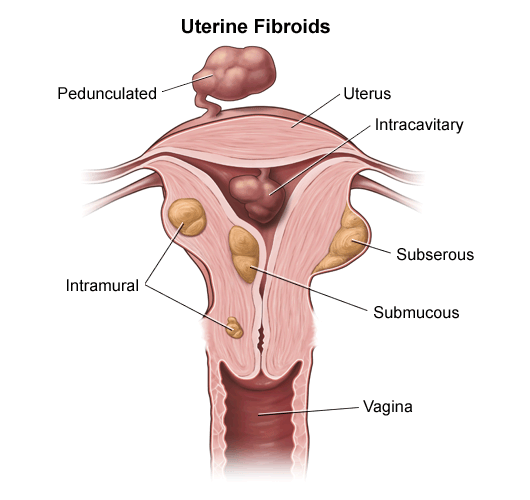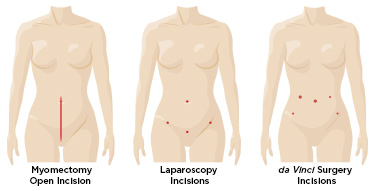Robotic-Assisted Myomectomy Surgery
Uterine fibroids (leiomyomas or myomas) are the most common benign tumours of the uterus (muscular growth in the womb). Fibroids are very common and not cancerous. Approximately 80% of women will develop fibroids in their lifetime, and their occurrence tends to increase with age until a woman goes through menopause.

Q: |
Who are at risk? |
A: |
Fibroids usually occur in women of childbearing age, affecting 20 to 40% of women older than 35 years old. However, they may shrink after menopause. It’s unclear why fibroids develop, but the factors below may affect women’s risk of having uterine fibroids:
|
Q: |
What are the signs and symptoms? |
A: |
Most women with uterine fibroids have no symptoms. However, fibroids may cause a number of symptoms depending on their size, location within the uterus, and how close they are to adjacent pelvic organs. The most frequent clinical symptoms are menorrhagia (heavy menstrual bleeding), pelvic pressure, pain in lower back, cramping, painful sex, frequent urination, bloating, and difficulty getting pregnant. |
Q: |
What are the treatment options? |
A: |
Women who have no symptoms from fibroids do not require treatment. However, for those experiencing significant symptoms, they may opt for medical or surgical treatment options. The best treatment depends on which symptom(s) are the most bothersome for the patient. For patients with minor symptoms, medications such as non-steroidal, anti-inflammatories and birth control pills can help to relieve their symptoms. However, if the fibroids cause significant discomfort or are associated with uterine bleeding, they may need to be removed. Surgery is the primary approach to fibroid treatment. Apart from hysterectomy (removal of womb), women who are fertile and wish to get pregnant in the future may choose uterine-sparing techniques, such as myomectomy surgery, to remove fibroids from the uterus lining. |








